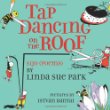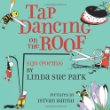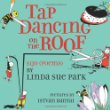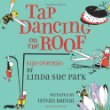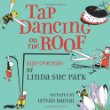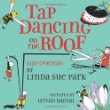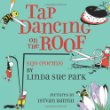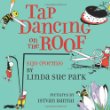Search Results: Returned 16 Results, Displaying Titles 1 - 16
-
-
c2005., Juvenile, Chronicle Books Call No: [E] Availability:1 of 1 At Location(s) Summary Note: A wordless picture book that shows a series of familiar scenes through many twists in point of view, such as a boy looking down out of a jet's window and another boy on the ground looking up at the same jet.
-
-
-- Re zoom1998., Juvenile, Puffin Books Call No: E BAN Genre: Wordless Availability:1 of 1 At Location(s) Summary Note: A wordless picture book presents a series of scenes, each one from farther away, showing, for example, a boat which becomes the image on a magazine, which is held in a hand, which belongs to a boy, and so on.
-
-
-- Re zoom1998, c1995, Juvenile, Puffin Books Call No: [E] Availability:1 of 1 At Location(s) Summary Note: A wordless picture book presents a series of scenes, each one from farther away, showing, for example, a boat which becomes the image on a magazine, which is held in a hand, which belongs to a boy, and so on.
-
-
c2007, Primary, Clarion Books Call No: 811 .54 Availability:1 of 1 At Location(s) Summary Note: Sijo is a traditional Korean form of poetry. Sijo is syllabic, like Japanese haiku, with three lines of 14 to 16 syllables each: the first two introduce the topic, the third and fourth lines develop it, and the fifth and sixth lines contain an unexpected humorous or ironic twist. This collection contains 26 sijo.
-
-
c2007, Primary, Clarion Books Call No: 811 .54 Availability:1 of 1 At Location(s) Summary Note: Sijo is a traditional Korean form of poetry. Sijo is syllabic, like Japanese haiku, with three lines of 14 to 16 syllables each: the first two introduce the topic, the third and fourth lines develop it, and the fifth and sixth lines contain an unexpected humorous or ironic twist. This collection contains 26 sijo.
-
-
c2007, Primary, Clarion Books Call No: 811 .54 Availability:1 of 1 At Location(s) Summary Note: Sijo is a traditional Korean form of poetry. Sijo is syllabic, like Japanese haiku, with three lines of 14 to 16 syllables each: the first two introduce the topic, the third and fourth lines develop it, and the fifth and sixth lines contain an unexpected humorous or ironic twist. This collection contains 26 sijo.
-
-
c2007, Primary, Clarion Books Call No: 811 .54 Availability:1 of 1 At Location(s) Summary Note: Sijo is a traditional Korean form of poetry. Sijo is syllabic, like Japanese haiku, with three lines of 14 to 16 syllables each: the first two introduce the topic, the third and fourth lines develop it, and the fifth and sixth lines contain an unexpected humorous or ironic twist. This collection contains 26 sijo.
-
-
c2007, Primary, Clarion Books Call No: 811 .54 Availability:1 of 1 At Location(s) Summary Note: Sijo is a traditional Korean form of poetry. Sijo is syllabic, like Japanese haiku, with three lines of 14 to 16 syllables each: the first two introduce the topic, the third and fourth lines develop it, and the fifth and sixth lines contain an unexpected humorous or ironic twist. This collection contains 26 sijo.
-
-
c2007, Primary, Clarion Books Call No: 811 .54 Availability:1 of 1 At Location(s) Summary Note: Sijo is a traditional Korean form of poetry. Sijo is syllabic, like Japanese haiku, with three lines of 14 to 16 syllables each: the first two introduce the topic, the third and fourth lines develop it, and the fifth and sixth lines contain an unexpected humorous or ironic twist. This collection contains 26 sijo.
-
-
c2007., Primary, Clarion Books Call No: 811 .54 Availability:1 of 1 At Location(s) Summary Note: Sijo is a traditional Korean form of poetry. Sijo is syllabic, like Japanese haiku, with three lines of 14 to 16 syllables each: the first two introduce the topic, the third and fourth lines develop it, and the fifth and sixth lines contain an unexpected humorous or ironic twist. This collection contains 26 sijo.
-
-
c2007., Primary, Clarion Books Call No: 811 .54 Availability:1 of 1 At Location(s)Publisher description Contributor biographical information Summary Note: Presents twenty-six sijo, traditional Korean syllabic poems, on "inside" and "outside" themes.
-
-
[2007]., Juvenile, Clarion Books Call No: 811 .54 Availability:1 of 1 At Location(s)Click here to view Summary Note: A collection of sijo poems, a traditional Korean verse form, celebrates the simple joy of everyday things, such as houseplants, breakfast, and thunder.
-
-
1995., Viking Call No: [E] Availability:1 of 1 At Location(s) Summary Note: A wordless picture book presents a series of scenes, each one from farther away, showing, for example, a girl playing with toys which is actually a picture on a magazine cover, which is part of a sign on a bus, and so on.
-
-
1998, c1995, Juvenile, Puffin Books Call No: [E] Availability:1 of 1 At Location(s) Summary Note: A wordless picture book presents a series of scenes, each one from farther away, showing, for example, a girl playing with toys which is actually a picture on a magazine cover, which is part of a sign on a bus, and so on.
-
-
1998, c1995, Juvenile, Puffin Books Call No: [E] Availability:1 of 1 At Location(s) Summary Note: A wordless picture book presents a series of scenes, each one from farther away, showing, for example, a girl playing with toys which is actually a picture on a magazine cover, which is part of a sign on a bus, and so on.
-
-
1995., Viking Call No: E BAN Genre: Wordless Availability:1 of 1 At Location(s) Summary Note: A wordless picture book presents a series of scenes, each one from farther away, showing, for example, a girl playing with toys which is actually a picture on a magazine cover, which is part of a sign on a bus, and so on.





